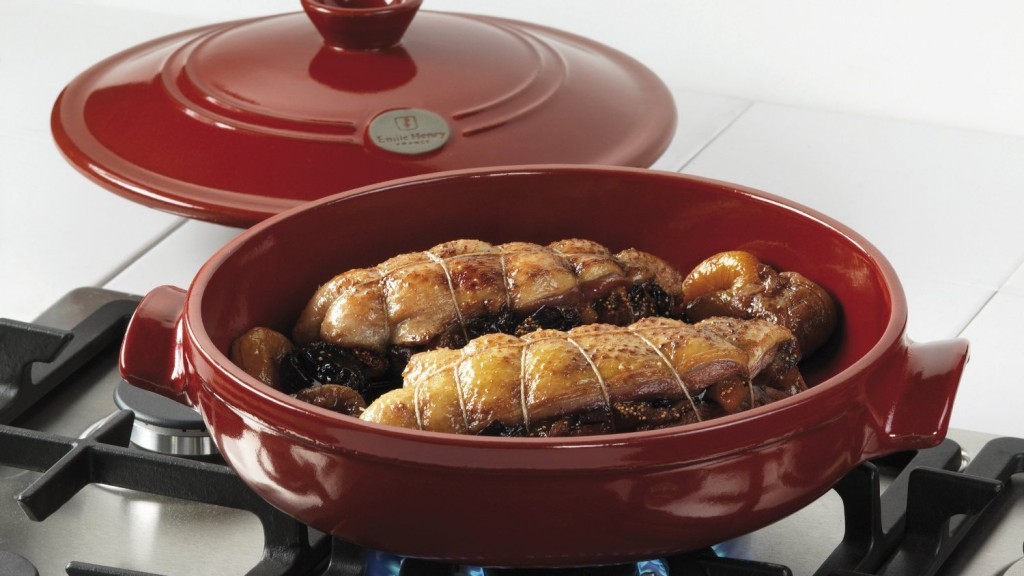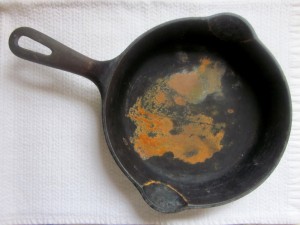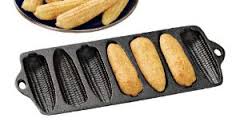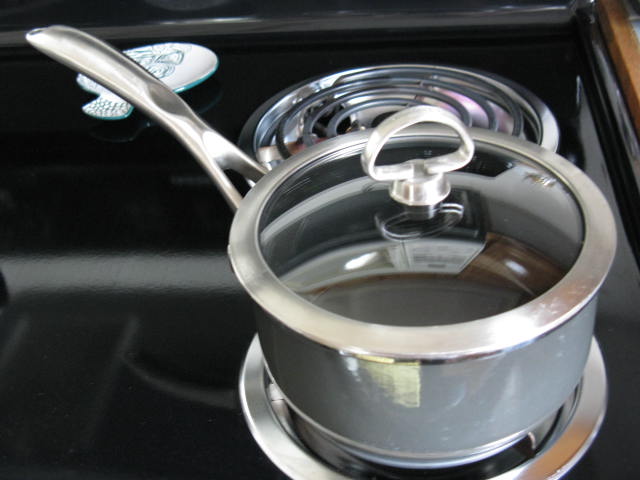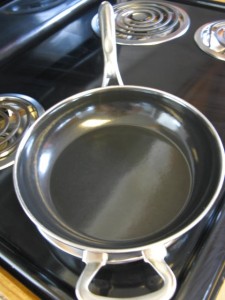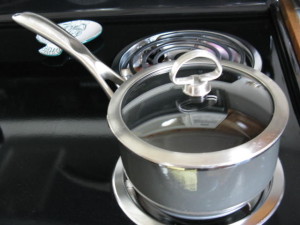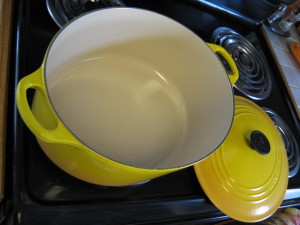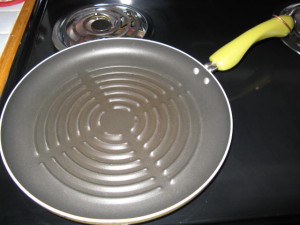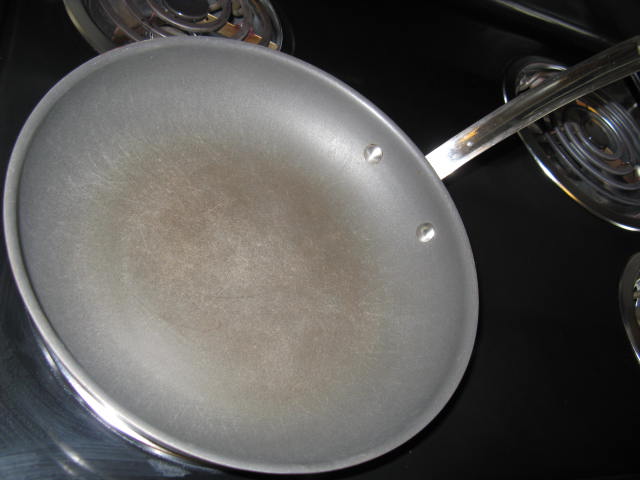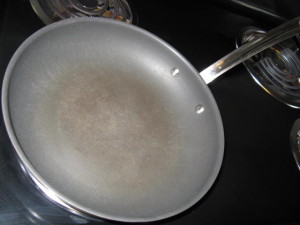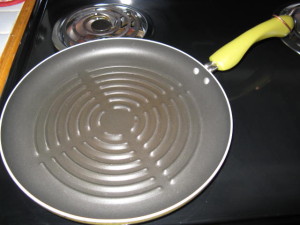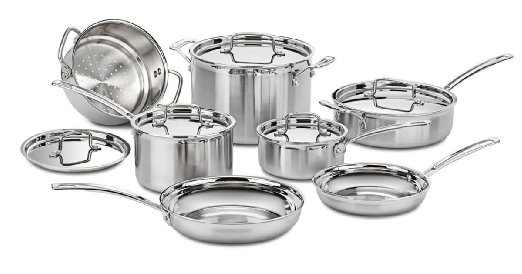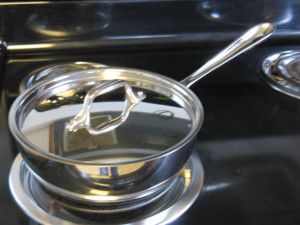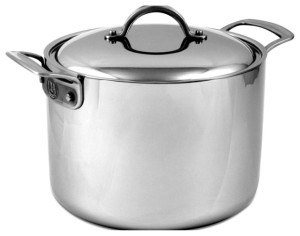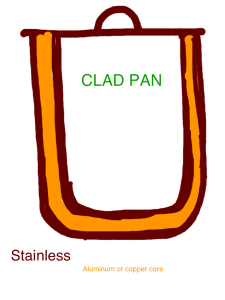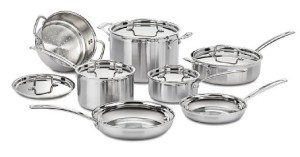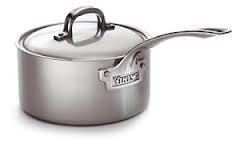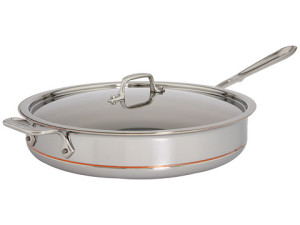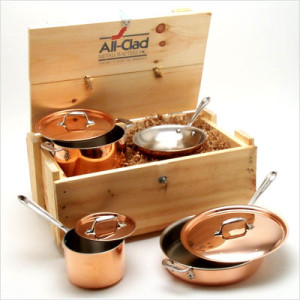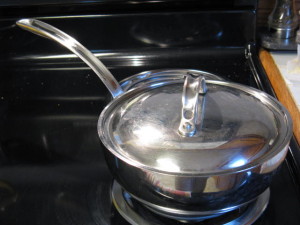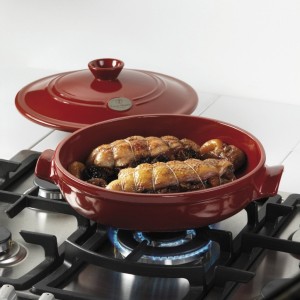 |
| Emile Henry Flame Top Brasier |
Anything ceramic/stoneware/terra cotta/earthenware being sold as sturdy cookware should be high-fired. This means when it’s being made, it is put in the oven once at a really high temperature, versus being pulled in and out several times like how most ceramics are made*. Doing this causes a piece of stoneware to become more brittle so it won’t hold up as long. A high-fire piece is going to be a heck of a lot stronger and can handle the stove top and oven. Since this cookware is just clay, the heat will distribute evenly, just like a stainless clad pan!
Emile Henry and Piral are the brands I am most familiar with. Since it is sold as an “all-natural” cookware, the colors (at least in these brands) are actually derived from metal oxides, not dyes, which are naturally occurring. These companies make a lot of dutch oven style pots, so they’re a great alternative to a heavy cast iron dutch oven. I always tell people to pick up the pan, then imagine it full of food. Can you carry it? If not, clay is probably the better option!
Natural cookware like this will generally require special care, so read your instructions! Cookware like Piral asks you to soak it before just the first use and to utilize a heat diffuser on electric stoves. Emile Henry also has seasoning instructions before first use, which are kind of funny. You boil a layer of milk and immediately turn the heat off and let it cool. Emile Henry will also start producing what look like hairline cracks inside the piece over time. Completely normal, and actually most cookware in this category will warn you of natural flaws that will occur!
 |
| Piral Cookware |
If you are cooking with unsealed clay, you will need to soak the piece, usually for 15-20 minutes. The water turns to steam and keeps the food really moist, so these are really great for roasting meat! Generally, clay is only for oven use and is a bit more fragile than the ceramic cookware mentioned above. Clay cookware can be really inexpensive or really expensive like the Romertopf brand that I remember selling a lot of during the holiday season.
Sealed cookware like Emile Henry and Piral are going to be a bit more costly than clay, but are backed by warranty periods, which I think is amazing for something that seems like it should be so fragile.
Click here to return to “Buying Cookware” to compare to other types of cookware!
*Read about “Ceramic Dinnerware and Bakeware Basics“
*Read about “Ceramic & Glass Dinnerware Brands“
*Read about “Buying Ceramic Dinnerware and Bakeware“
